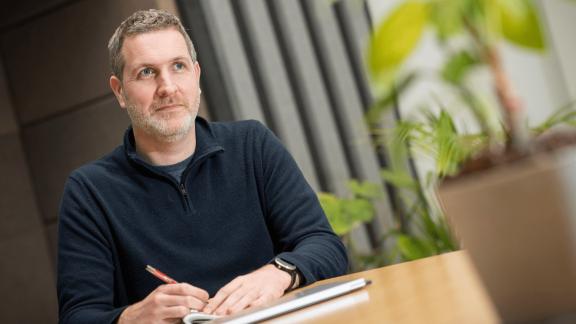To unlock productivity in acute trusts, models of care delivery must change

Giving frontline staff the ability to easily message patients and deliver more care outside of appointments will unlock significant productivity gains, meaning more patients can get the care they need, when they need it.
Recent NHS waiting times figures reveal a backlog of 7.6 million patients. This, amongst other factors, has led to record lows in public satisfaction with the NHS. Through Lord Darzi's review of the NHS, Wes Streeting has made tackling this a priority, pledging to ‘tilt towards technology’ and ‘drive productivity in hospitals’.
Over the past decade, NHS productivity has declined while sectors like banking and retail have achieved huge gains, in large part due to using technology. Though the productivity dilemma for the NHS is rooted in an ageing population living with increasingly complex conditions, for the NHS to increase productivity and bend the cost curve - which is currently on track to make healthcare as we know it unaffordable - it must similarly embrace technology. Not just to digitise existing pathways, but to reshape how care is delivered.
The traditional model of care delivery isn’t keeping up
Productivity in acute trusts has gradually declined over the past five years. Despite a 25 per cent increase in hospital doctors between January 2019 and 2024, monthly elective procedures rose by just 5 per cent and outpatient appointments by 8 per cent.
While we know there are many reasons for this, including the COVID-19 pandemic, financial pressures and industrial action, the most significant contributing factor is that the model of care delivery, which was designed around communication channels like letters and phones, hasn’t evolved.
With only analogue ways to communicate with patients, services have had to operate on the basis that care is delivered solely through appointments and letters. But with significant waiting lists, constrained resources (both financial and workforce) and growing patient complexity, this model is holding staff back from making the productivity gains that are so desperately needed.
To address this, we need to use modern communication methods, like two-way messaging with patients, to radically redesign models of care. This will mean that staff can easily message patients and deliver more care outside of appointments - increasing capacity for those who want or need them. Because as long as staff can’t communicate quickly and easily with patients, they will continue to ‘fall back’ on the appointment as the only time when care is delivered. Not only does this continue to put added pressure on staff, it also won’t help to clear the backlog.
Two changes in care delivery
There are two changes that can be made to the way elective and outpatient services deliver care, which would see quick results.
1. Remove appointments that don’t need to happen
Outpatient services often schedule follow-up appointments every few months, regardless of patient need. To release capacity, services should eliminate non-essential appointments and book appointments based only on patient need.
For example, University Hospitals of Leicester (UHL) previously booked dermatology patients for follow-up appointments by default. Patients on a Patient Initiated Follow Up (PIFU) pathway were given a phone number to ring if they needed help, but would struggle to get through. When they did, they’d be automatically booked in for an appointment regardless of their query.
Now, patients receive a digital PIFU contact link. The team reviews, triages and responds to requests online, giving appointments based on need. Over six months, 853 patients received a digital PIFU contact link, with only 8 per cent needing to submit a request. Of these, 39 were medical and 32 were admin, and around half were resolved digitally. Staff are now spending less time in appointments with patients who don’t want or need them and more time with patients who do.
2. Move care from happening in appointments to two-way messaging, wherever possible
A big driver for productivity growth within general practice has been the evolution of their care model. Many GP surgeries now deliver a significant proportion of care asynchronously, i.e. outside of appointments, via two-way messaging and other digital communication tools. Appointments only happen for the highest risk and most complex patients, or those who want to be seen face-to-face. Patients have also embraced this new way of interacting with their GPs, valuing the convenience and improved access.
Trusts are starting to do this too. For example, at UHL, patients referred for rectal bleeding receive a questionnaire to gather clinical information to determine if they should be seen in clinic first or proceed straight to colonoscopy. This approach has seen 64 per cent of patients go straight to investigation, avoiding one of two appointments to decide on next steps.
Based on the impact at UHL and other trusts, we estimate that implementing these changes could free up 20 per cent of a trust's annual outpatient capacity, allowing them to address the backlog without having to increase the size of the workforce or number of appointments they deliver.
Let’s give staff the tools they need
We want to see Wes Streeting support staff in acute trusts by providing access to the modern communication solutions that have enabled primary care to radically evolve their care model. Staff are still reliant on dictating one-way letters or arranging appointments to share information, which will continue to hold productivity gains back, even if funding is increased. Only then will staff be able to drive productivity improvements and reduce waiting lists at pace.
Jacob Haddad is CEO and co-founder of Accurx. You can follow Jacob on X @jacobnhaddad


